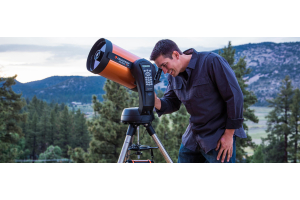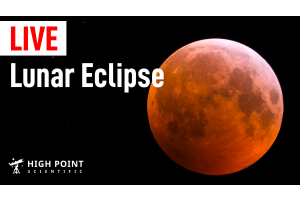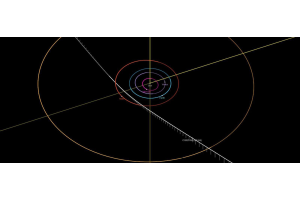Search "planets"
- September 13, 2024
In this guide, I’ll take you through each step of my planetary imaging journey, and show you how to plan, captured, and process your own image of Jupiter!
- July 19, 2022
As almost everyone knows, there are currently eight planets in the solar system. Not so long ago, there were nine planets, but Pluto is now considered a dwarf planet. What happened? Why is Pluto no longer a planet? And what is a planet, anyway?
- May 07, 2018
This summer, millions of people will turn their eyes and telescopes skyward to gaze at Jupiter, Saturn, and Mars in all their glory. All three planets reach opposition between the months of May and August, and that means they'll be closer and brighter...
- December 07, 2022
What will you see in the sky in 2023? Learn where the planets will be in 2023 and when solar eclipses, meteor showers & eclipses of the Moon will take place. The High Point 2023 Astronomical Calendar is your guide to the night sky for every month of the...
- December 09, 2024
What will you see in the sky in 2025? Learn where the planets will be in 2025 and when meteor showers & eclipses will take place. The High Point 2025 Astronomical Calendar is your guide to the night sky for every month of the year. Download your free...
- September 10, 2024
James Webb Space Telescope's latest discovery, six rogue planets located in NGC 1333 , provides valuable insights into the processes of planet formation and the dynamics of planetary systems
- May 30, 2018
In late July of this year, there is an exciting opportunity to see Mars at its best! The “Red Planet” will be at opposition, which means it will be opposite the Sun as observed from Earth. At a distance of only 35.8 million miles, it will be closer to...
- December 06, 2023
What will you see in the sky in 2024? Learn where the planets will be in 2024 and when solar eclipses, meteor showers & eclipses of the Moon will take place. The High Point 2024 Astronomical Calendar is your guide to the night sky for every month of the...
- May 24, 2022
It’s been said that astronomy is the oldest science. Before our ancestors even invented language and learned how to write, they were staring up at the heavens. The stars themselves were unimaginable mysteries; tiny points of light that seemed to burn...
- June 18, 2025
2025 might be one of the best years to see Uranus and Neptune. Locating these two planets is often considered a highlight on the journey of becoming a more advanced amateur astronomer. After all, how many people can say they’ve seen all of the planets...
- October 30, 2024
There are only two planets that orbit closer to the Sun than the Earth. As such, Mercury and Venus are known as “inferior planets,” but as any astronomer will tell you, there’s nothing inferior about these worlds.
- December 06, 2024
Most of our first experiences with a telescope involve viewing the lunar surface or one of the great gas giants Jupiter and Saturn. Seeing these objects in great detail with your own eyes can be deeply impactful.
- March 03, 2022
We’ve only just begun to explore the worlds that lie beyond our own, but in the decades since the first space probes left the Earth, our knowledge of our neighboring planets has grown exponentially. You may not be able to venture out into the solar system...
- November 22, 2023
In the vast expanse of the cosmos, humanity has peered into the depths of space, unraveling mysteries and expanding our understanding of the universe. We appreciate each and every one of these discoveries of astronomical proportions, and we’ve taken the...
- January 01, 2022
2022 began with Mercury, Jupiter, and Saturn huddled together in the evening twilight, and even Mercury made a brief appearance with Venus and Mars in the predawn sky in the last days of February. In May we had the first of two total lunar eclipses in...










